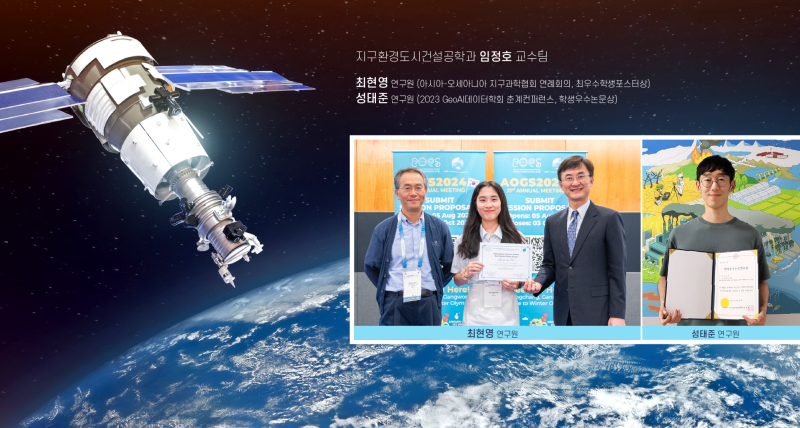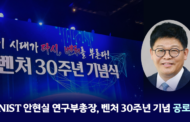A team of researchers, led by Professor Jungho Im from the Department of Civil Urban Earth and Environmental Engineering at UNIST, has been honored with awards at domestic and international conferences for their outstanding contributions to satellite-based environmental monitoring research. Notably, researchers HyunYoung Choi (Combined MS/PhD in CUEE.n) and TaeJun Sung (Combined MS/PhD in CUEE.n) have played significant roles in these accolades.
At the GeoAI DAta Society Fall Conference 2023, researcher TaeJun Sung received the Excellence Presentation Paper Award for his algorithm on satellite forest fire monitoring. Traditional forest fire detection algorithms encounter challenges, such as inaccurate monitoring due to factors like altitude and vegetation index. However, his proposed algorithm addresses these variables simultaneously, resulting in highly accurate monitoring. The utilization of structural information from satellite images further enhances its effectiveness.
“I believe that our novel approaches have yielded promising results in overcoming limitations present in previous forest fire detection algorithms,” stated TaeJun Sung. “Building upon this experience, I am committed to pursuing diverse studies.”
Additionally, HyunYoung Choi received the esteemed Best Student Poster Award at the 2023 Annual General Meeting of the Asia Oceania Geosciences Society (AOGS). The conference took place from July 30 to August 4, 2023 in Singapore. Her award-winning presentation showcased a machine learning-based algorithm capable of accurately calculating geostationary environmental satellite (GEMS) aerosol optical depth (AOD). By precisely determining aerosol optical thickness levels through this method, errors associated with air quality observations can be significantly reduced. Aerosol optical thickness serves as an indirect indicator of air quality, including fine dust particles, and GEMS’ official calculations often underestimate pollution levels in high-pollution scenarios. She utilized hyperspectral atmosphere upper reflectance data from GEMS and numerical model-based weather variables as learning data for machine learning.
“It is truly rewarding to effectively monitor aerosol levels across a wide area encompassing East Asia, including the Korean Peninsula, using domestic satellite data,” expressed HyunYoung Choi. “Our commitment to air quality monitoring research remains strong as we strive towards creating a healthier living environment for all.”












